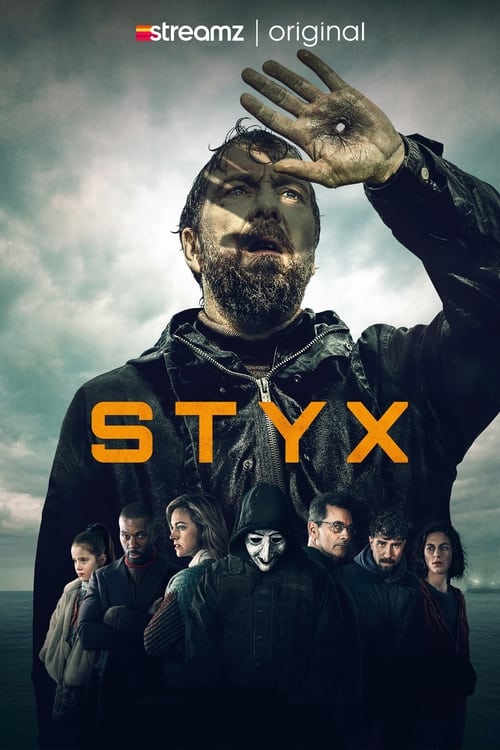
Ask Your Own Question
What is the plot?
The episode begins with a tense atmosphere as the team at the medical facility is still reeling from the aftermath of a recent attack. The camera pans over the exhausted faces of the medical staff, highlighting their emotional and physical fatigue. Dr. Sarah Thompson, the lead physician, is seen pacing in her office, her brow furrowed with worry as she contemplates the safety of her team and the patients they are trying to save.
As the day progresses, a new crisis emerges when a group of local villagers arrives at the facility, panicked and desperate. They bring news of a nearby conflict that has escalated, resulting in casualties. The villagers plead for help, and Sarah, driven by her commitment to saving lives, decides to mobilize her team to assist. She gathers her staff, including the skilled nurse, Mark, and the resourceful medic, Lisa, to prepare for the incoming patients.
The scene shifts to the battlefield, where chaos reigns. Soldiers are seen tending to the wounded, and the sounds of gunfire echo in the background. The camera captures the harrowing sights of injured civilians being carried away on stretchers. Sarah and her team arrive at the scene, and the urgency of the situation is palpable. They quickly set up a triage area, working efficiently to assess and treat the wounded.
As they work, tensions rise when they encounter a group of armed militants who threaten the safety of the medical team. Sarah stands her ground, advocating for the patients and insisting that they need to be treated regardless of the conflict. The militants, initially aggressive, are taken aback by her determination. A standoff ensues, with Sarah trying to reason with them while Mark and Lisa prepare to defend themselves if necessary.
In a pivotal moment, one of the militants, visibly shaken by the sight of the injured, begins to question their actions. This internal conflict among the militants creates a brief window of opportunity for Sarah and her team. They manage to convince the militants to allow them to continue their work, emphasizing the importance of saving lives over the ongoing violence.
The narrative shifts back to the medical facility, where the team is now overwhelmed with patients. The emotional toll of the day weighs heavily on Sarah as she navigates through the chaos, making critical decisions about who to treat first. The camera captures her moments of doubt and fear, showcasing her vulnerability as a leader in such dire circumstances.
As night falls, the situation becomes increasingly dire. Supplies are running low, and the team is exhausted. Sarah receives a call from a higher authority, pressuring her to evacuate the facility due to the escalating violence in the area. Torn between her duty to her patients and the safety of her team, she grapples with the decision. Ultimately, she chooses to stay, believing that they can still save lives.
The climax of the episode occurs when a sudden attack on the facility forces the team to go into lockdown. The sound of gunfire and explosions fills the air, and panic ensues among the staff and patients. Sarah takes charge, directing everyone to secure the building and protect the vulnerable patients. The tension escalates as they barricade doors and prepare for a potential confrontation.
In the midst of the chaos, Sarah discovers that one of the patients, a young boy, is missing. Driven by her maternal instincts and sense of responsibility, she ventures out into the chaos to find him. The scene is fraught with danger as she navigates through the darkened hallways, her heart racing with fear for the boy's safety.
After a tense search, Sarah finds the boy hiding in a supply closet, terrified but unharmed. She comforts him, reassuring him that they will be safe. As they make their way back, they encounter a group of militants who have breached the facility. A confrontation ensues, and Sarah must think quickly to protect the boy and herself.
In a desperate bid for survival, Sarah uses her medical knowledge to create a diversion, allowing them to escape back to the main area of the facility. The team rallies together, and they manage to fend off the militants, showcasing their resilience and determination to protect their patients.
As dawn breaks, the attack subsides, and the team is left to assess the damage. The emotional weight of the night's events hangs heavy in the air as they mourn the losses and celebrate the lives they managed to save. Sarah reflects on the choices she made, feeling a mix of relief and sorrow as she looks at her team, who have become like family in the face of adversity.
The episode concludes with a sense of hope amidst the chaos. Sarah stands outside the facility, watching the sunrise, her resolve strengthened. She knows that the fight to save lives continues, and she is ready to face whatever challenges lie ahead.
What is the ending?
In the ending of "The Dead are Not Silent," the characters confront the consequences of their actions as they face the aftermath of a devastating event. The episode culminates in a tense standoff, revealing deep-seated emotions and unresolved conflicts among the main characters. Ultimately, they must come to terms with their choices, leading to a bittersweet resolution that leaves them changed.
As the episode unfolds, the tension escalates. The scene opens with the aftermath of a violent confrontation, the air thick with the weight of loss and regret. The camera pans over the debris of the conflict, capturing the somber expressions of the characters as they process the chaos around them.
In the first scene, we see the main character, Alex, grappling with guilt over the decisions that led to the tragic events. His internal struggle is palpable; he moves through the wreckage, haunted by the faces of those who were lost. The cinematography emphasizes his isolation, with close-ups of his furrowed brow and clenched fists, showcasing his emotional turmoil.
Next, the focus shifts to Sarah, who is trying to hold the group together. She stands amidst the chaos, her voice steady but laced with urgency as she attempts to rally the remaining survivors. Her determination is evident, but there's a flicker of fear in her eyes, revealing her vulnerability. The camera captures her as she reaches out to Alex, trying to bridge the emotional gap between them, but he pulls away, consumed by his own demons.
The scene transitions to a confrontation between Alex and another key character, Mark. Tensions flare as they argue about responsibility and blame. Mark's anger is raw, and he accuses Alex of being reckless. The dialogue is sharp, filled with accusations that cut deep, reflecting their fractured friendship. The camera alternates between their faces, highlighting the intensity of their emotions.
As the standoff reaches its peak, the group is forced to make a decision about their next steps. They gather in a dimly lit room, the atmosphere thick with uncertainty. Each character shares their perspective, revealing their fears and hopes for the future. The dialogue is poignant, with moments of silence that speak volumes. The camera captures the weight of their words, lingering on their expressions as they confront the reality of their situation.
In the final moments, the group decides to honor those they lost by vowing to change their ways. They stand together, united in their resolve, but the camera lingers on Alex, who still carries the burden of his choices. As they leave the room, the light shifts, casting long shadows that symbolize the lingering impact of their past.
The episode concludes with a montage of the characters moving forward, each in their own way. Alex is seen walking away from the group, a solitary figure against the backdrop of a new dawn, symbolizing his journey toward redemption. Sarah, on the other hand, takes a leadership role, guiding the others with newfound strength. Mark, while still grappling with his anger, begins to find a path toward forgiveness.
In the end, the fate of each character is intertwined with the lessons they've learned. Alex is left to confront his guilt, while Sarah emerges as a beacon of hope for the group. Mark, though still struggling, starts to understand the importance of unity in the face of adversity. The episode closes on a note of cautious optimism, suggesting that while the past cannot be changed, the future holds the potential for healing and growth.
Is there a post-credit scene?
In the episode "The Dead are Not Silent" from season 1 of "Under Fire," there is indeed a post-credit scene. This scene unfolds in a dimly lit room, where a group of characters, previously seen in the episode, gather around a table cluttered with maps and photographs. The atmosphere is tense, filled with an air of urgency and secrecy.
As the camera zooms in, we see one character, visibly shaken, pointing to a specific location on the map. Their voice trembles as they express concern about the implications of their findings, suggesting that the events they have just experienced are far from over. The others listen intently, their expressions a mix of fear and determination.
The scene shifts focus to a photograph pinned to the wall, showing a figure shrouded in shadow, hinting at a larger conspiracy at play. The final shot lingers on the photograph as the screen fades to black, leaving viewers with a sense of foreboding and anticipation for what lies ahead. This moment encapsulates the ongoing struggle and the unresolved mysteries that will continue to unfold in future episodes.
What is the significance of the flashbacks in this episode?
The flashbacks provide insight into the victims' lives and the events leading up to their disappearances, deepening the emotional impact of the story and highlighting the interconnectedness of the characters.
What role does the local community play in the investigation?
The local community is initially uncooperative, harboring secrets and fears about the past, but as the investigation unfolds, some members begin to share crucial information that aids the detectives.
What key event triggers the investigation in 'The Dead are Not Silent'?
The investigation is triggered by the discovery of a body in a remote area, which leads the team to uncover a series of mysterious disappearances linked to a local legend.
How does the character of Detective Sarah Miller evolve in this episode?
Detective Sarah Miller grapples with her past traumas while pursuing the case, revealing her vulnerabilities and determination to seek justice for the victims.
How does the episode address the theme of guilt among the characters?
Characters confront their feelings of guilt over past decisions, particularly in relation to the victims, which adds layers to their motivations and drives the narrative tension throughout the episode.
Is this family friendly?
In "The Dead are Not Silent," the tenth episode of "Under Fire," there are several elements that may be considered objectionable or upsetting for children or sensitive viewers.
-
Violence and Injury: The episode contains scenes depicting violence, including injuries sustained by characters in high-stress situations. The portrayal of medical emergencies may be intense and graphic.
-
Death and Grief: Themes of death are central to the episode, with characters dealing with loss and mourning. This may evoke strong emotional responses and could be distressing for younger viewers.
-
Emotional Turmoil: Characters experience significant emotional distress, including fear, anxiety, and despair. The intensity of their feelings may be overwhelming for some viewers.
-
Mature Themes: The episode explores complex themes such as morality in crisis situations, the impact of trauma, and the consequences of decisions made under pressure, which may be difficult for children to fully understand.
-
Tense Situations: The pacing includes moments of high tension and suspense, which could be frightening for younger audiences.
These aspects contribute to a more mature viewing experience, and parental discretion is advised for younger viewers or those sensitive to such themes.


































